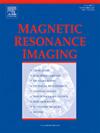Segmental evaluation of myocardial ischemia in stable coronary artery disease using native T1 mapping
IF 2
4区 医学
Q2 RADIOLOGY, NUCLEAR MEDICINE & MEDICAL IMAGING
引用次数: 0
Abstract
Objective
To evaluate the myocardial ischemic segments and related factors in stable coronary artery disease (SCAD) patients by native T1 mapping.
Methods
316 SCAD patients and 30 healthy controls (all right coronary dominant) underwent CMR native T1 mapping within 90 days of CCTA. Segmental native T1 values were measured using AHA 16-segment model. Patients were grouped by number of diseased coronary arteries (DCA [1–3]) with the largest diameter stenosis (DS [< or ≥ 50 %]) and culprit coronary artery (CCA [LAD, LCX, RCA]), or number of coronary artery stenosis ≥50 % (CAS [0–3]), respectively. Ischemic segments were defined as native T1 values significantly elevated versus controls. Multivariable generalized estimating equations (GEE) model was used to identify independent factors.
Results
Single-vessel disease showed localized native T1 increases in corresponding perfusion territories, while multi-vessel disease exhibited complex ischemia patterns. Anterior and anteroseptal segments had significantly higher native T1 values in groups CAS 2 and 3 than CAS 0 and 1 (Bonferroni-adjusted P < 0.05). GEE model identified DCA (two-vessel disease: β = 13.6 ms, P = 0.010), CAS (1–3: β = 10.5, 34.4 and 57.2 ms, P < 0.05, respectively), and coronary artery calcium (CAC) score 3 and 4 (β = 12.2 and 14.5 ms, P < 0.05), LAD-fractional flow reserves (LAD-FFR) (β = −47.3 ms, P = 0.010) and CCA (LCX: β = −9.5 ms, P = 0.019) as independent factors.
Conclusion
Native T1 mapping reveals spatially heterogenous ischemia in SCAD and is independently associated with both anatomical and functional parameters, supporting its value in personalized evaluation and management.
应用原生T1定位对稳定型冠状动脉疾病心肌缺血的节段性评价。
目的:应用原生T1标测技术评价稳定型冠状动脉疾病(SCAD)患者心肌缺血段及相关因素。方法:316名SCAD患者和30名健康对照(均为右冠状动脉显性)在CCTA 90 天内进行CMR原生T1定位。采用AHA 16节段模型测量节段原生T1值。根据患病冠状动脉数量(DCA)对患者进行分组(Mozaffarian et al., 2016;Neumann et al., 2019;Gräni et al., 2020[1-3]))最大直径狭窄(DS[<或 ≥ 50 %])和罪魁祸首冠状动脉(CCA [LAD, LCX, RCA]),或冠状动脉狭窄数≥50 % (CAS[0-4])。缺血段定义为原生T1值与对照组相比显著升高。采用多变量广义估计方程(GEE)模型识别独立因素。结果:单血管病变表现为相应灌注区域局部T1升高,而多血管病变表现为复杂的缺血模式。与CAS 0和1组相比,CAS 2和3组前段和前间隔段的原生T1值明显更高(bonferroni校正P 结论:原生T1映射揭示了SCAD的空间异质性缺血,并与解剖和功能参数独立相关,支持其在个性化评估和管理中的价值。
本文章由计算机程序翻译,如有差异,请以英文原文为准。
求助全文
约1分钟内获得全文
求助全文
来源期刊

Magnetic resonance imaging
医学-核医学
CiteScore
4.70
自引率
4.00%
发文量
194
审稿时长
83 days
期刊介绍:
Magnetic Resonance Imaging (MRI) is the first international multidisciplinary journal encompassing physical, life, and clinical science investigations as they relate to the development and use of magnetic resonance imaging. MRI is dedicated to both basic research, technological innovation and applications, providing a single forum for communication among radiologists, physicists, chemists, biochemists, biologists, engineers, internists, pathologists, physiologists, computer scientists, and mathematicians.
 求助内容:
求助内容: 应助结果提醒方式:
应助结果提醒方式:


